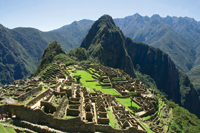
THE 20th anniversary edition of Arabian Travel Market (ATM), held last month in Dubai, UAE, brought together 3,000 exhibitors from all over the world and sent out a clear message that travel in the Arab world is booming.
Globally too, travel is on a growth curve, with the industry notching up a billion travellers last year.
The United Nations World Tourism Organization (UNWTO) is now encouraging tourists to make a positive difference when on foreign shores.
From buying local to respecting cultures, protecting the local heritage and using public transport, the traveller’s habits have consequences and an opportunity to make a difference. The idea is to turn these one billion travellers into one billion opportunities, be it jobs or achieving a sustainable future.
So where do these one billion travellers come from? The UNWTO reported 53 per cent from Europe, 22 per cent from the Asia-Pacific, 17 per cent from the Americas, four per cent from the Middle East and three per cent from Africa. So where are these mature, travellers-in-the-know heading to this year?
According to UNWTO, the top five travel destinations in the world are Paris, London, New York, the Mediterranean region Antalya in Turkey, and Singapore. However, at the ATM, several new markets made their debut trying to tap into the Arab traveller potential. Among them were the Greater Miami Convention and Visitors Bureau who introduced Miami’s most fashionable beach destination Bal Habour to the region.
Peru, ranked among the world’s ten most preferred destinations according to Ernst & Young, was another debutant for whom the region is of great importance as it attracts growing numbers of Emirati traveller’s year-on-year. In January 2013 the nation was listed in Time Out Dubai’s ‘Travel Hot List’ as the UAE’s second favourite long-haul destination.
Kenya is another destination vying for its share of visitor arrivals with several new luxury resorts, lodges and camps opening their doors this year. Amsterdam, a popular choice with cyclists, art-folk and boat-folk is certainly buzzing. This year calls for several celebrations including the 400th anniversary of the city’s canals and the reopening of the Rijksmuseum after a 10-year closure.
Closer home, Oman seems to be making all the right moves. It continues to remain popular among weekenders looking to escape the skyscrapers from neighbouring UAE. From hostile desert to the Musandam Peninsula, Oman is rugged and spectacular in every way.
As visitors continue to travel and discover new horizons, issues like smarter, easier visa policies that will facilitate freedom of travel and improve travel experiences, are still being addressed. The World Travel and Tourism Council (WTTC) estimates that the G20 countries could generate 122 million more international travellers by improving visa processes. This means an additional $206 billion in tourism exports and over five million new jobs.
One would hope these countries listen – and help facilitate travel for two billion travellers by 2020.
By Shalu Chandran
